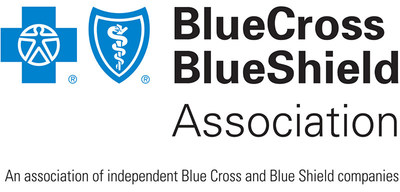HOPDs can charge nearly 60% more for procedures than ambulatory surgery centers and doctors’ offices, according to claims data analyzed by Blue Health Intelligence ®
WASHINGTON, Sept. 14, 2023 /PRNewswire/ — When common medical procedures were performed in a hospital outpatient department (HOPD) rather than a doctor’s office, costs were substantially higher according to a national analysis of tens of millions of claims. The analysis, released by the Blue Cross Blue Shield Association (BCBSA), shows the costs for prevalent procedures like mammograms or colonoscopies were consistently higher — as much as 58% more expensive — when performed in HOPD settings. These higher hospital prices mean higher costs to consumers.
To examine the cost disparities at different health care locations, Blue Health Intelligence® analyzed deidentified claims data for six common, everyday outpatient procedures, covering 133 million Blue Cross and Blue Shield members from 2017 through 2022.
Findings show that not only were HOPDs charging more for the exact same service, but prices also increased faster each year compared to charges at physician offices and ambulatory surgery centers (ASCs), where patients receive outpatient diagnostic procedures as well as outpatient surgical care.
Price differences in 2022 for common procedures based on setting were:
- Mammograms cost 32% more in an HOPD than in a doctor’s office.
- Colonoscopy screenings cost 32% more in an HOPD than in an ASC and double the cost compared to when performed in a doctor’s office.
- Diagnostic colonoscopies cost 58% more in an HOPD than in an ASC and more than double the cost compared to when performed in a doctor’s office.
- Cataract surgery costs 56% more in an HOPD than in an ASC.
- Ear tympanostomies cost 52% more in an HOPD than when performed in an ASC.
- Clinical visits cost 31% more in an HOPD setting than in a doctor’s office.
With roughly 40 million mammograms and more than 15 million colonoscopy screenings performed in 2022, implementing site-neutral payment policies would lead to significant savings.
This data is consistent with previous research. A study by University of California-Berkeley found that the prices paid in 2019 by Blue Cross Blue Shield Plans in HOPDs were double those paid in doctors’ offices for biologics, chemotherapies and other infused cancer drugs — 99% to 104% higher — and 68% higher for infused hormonal therapies.
Furthermore, a 2016 study in the American Journal of Managed Care showed prices for seven common services were significantly higher at an HOPD than a physician’s office, ranging from 21% more for an office visit to 258% more for a chest radiography.
“The cost of a procedure shouldn’t be determined by the setting where the care is delivered,” said BCBSA Senior Vice President of Policy and Advocacy, David Merritt. “Lowering the cost of care, regardless of the site, is common sense. Our analysis shows site-neutral legislation could save our patients, businesses and taxpayers nearly $500 billion over 10 years. We look forward to continuing our work with Congress to protect patients from these higher costs.”
One key driver of these cost differences is the acquisition of physician practices by corporate health systems over the past 20 years, which has resulted in those physician practices being converted into HOPDs, thereby generating additional facility fees and higher prices overall. Furthermore, Medicare pays more for services provided in HOPDs than it does when the same services are provided in other care settings outside of the hospital, costing both patients and Medicare hundreds of millions of dollars.
BCBSA supports bipartisan legislation in the U.S. House of Representatives and the U.S. Senate to enact fair hospital billing policies, including Reps. Kevin Hern (R-OK) and Annie Kuster’s (D-NH) FAIR Act and Sens. Maggie Hassan (D-NH) and Mike Braun’s (R-IN) SITE Act.
Additionally, earlier this year, BCBSA released Affordability Solutions for the Health of America, a comprehensive set of proposals that could reduce health care costs for patients, consumers and taxpayers by $767 billion over 10 years. This can be achieved by expanding site-neutral payments for outpatient services, improving competition, increasing access to lower-cost prescription drugs, and ensuring patients receive high-quality care at the right place and time.
“The Blue Cross Blue Shield Association is committed to building a more affordable, equitable, better system of health. These commonsense solutions address the root causes of rising health care costs and prioritize the needs of patients,” continued Merritt.
About Blue Cross Blue Shield Association
The Blue Cross and Blue Shield Association is a national federation of 34 independent, community-based and locally operated Blue Cross and Blue Shield companies that collectively provide health care coverage for one in three Americans.
![]() View original content to download multimedia:https://www.prnewswire.com/news-releases/costs-for-common-health-care-procedures-significantly-higher-when-performed-in-hospital-outpatient-departments-301927476.html
View original content to download multimedia:https://www.prnewswire.com/news-releases/costs-for-common-health-care-procedures-significantly-higher-when-performed-in-hospital-outpatient-departments-301927476.html
SOURCE Blue Cross Blue Shield Association

Featured image: Megapixl © Snowingg









